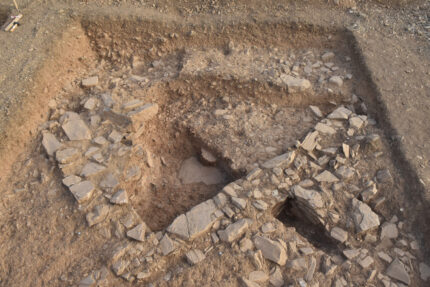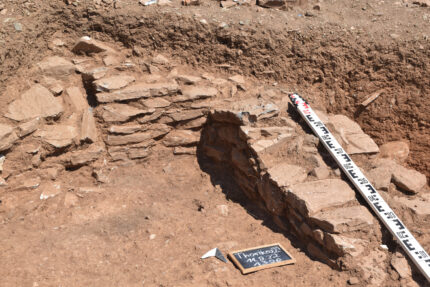 Archaeologists have discovered the remains of the earliest Iron Age house in Attica at the archaeological site of Thorikos 40 miles south of Athens. The structure first emerged in a 2019 excavation that uncovered the corner of a wall. Archaeologists first thought it was the corner of a tomb, but a wider excavation found no burial, but rather a building, likely a dwelling, from the 10th or 9th century B.C.
Archaeologists have discovered the remains of the earliest Iron Age house in Attica at the archaeological site of Thorikos 40 miles south of Athens. The structure first emerged in a 2019 excavation that uncovered the corner of a wall. Archaeologists first thought it was the corner of a tomb, but a wider excavation found no burial, but rather a building, likely a dwelling, from the 10th or 9th century B.C.
Over the past year, the scientists continued to research the extent of the building and identified five to six rooms. In the largest room there were still numerous pebbles in association, which indicate a paved courtyard. An analysis of inorganic and organic features of the rock confirmed a use from about 950 to 825 BC.
“Existing grinding stones for grain indicate a function as a residential building. The differentiated structure of the residential building speaks for either a complex society or an already developed social hierarchy,” says [Prof. Dr. Johannes Bergemann, Director of the Archaeological Institute at the University of Göttingen]. “Scientific analyzes will show whether there was animal breeding here and whether the silver ore typical of the area was mined at this time.”
Inhabited since the 4th millennium B.C., Thorikos was an early center of mining starting from the Neolithic era, first just lead in the 3rd millennium B.C. and then silver from 1500 B.C. Mycenaean underground beehive tombs from that era have been found at the site, and there is material evidence of Mycenaean mining operations at Thorikos dating to the 12th century B.C.
 Thorikos became part of the polis of Athens along with the rest of Attica in around 900 B.C., so the newly-discovered structured dates to the early years of the Athenian synoikismos, the process of combining many small polities into one powerful city-state.
Thorikos became part of the polis of Athens along with the rest of Attica in around 900 B.C., so the newly-discovered structured dates to the early years of the Athenian synoikismos, the process of combining many small polities into one powerful city-state.
With funding now secured from the Gerda Henkel Foundation, the University of Göttingen team in cooperation with the University of Ghent will be able to complete the excavation over the next two years to unearth the full extent of the building. Discoveries will then be studied and analyzed.